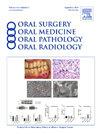Augmented teaching of the next-generation-dentists in diagnosis of common dental diseases with the overjet artificial intelligence (AI) module
IF 2
3区 医学
Q2 DENTISTRY, ORAL SURGERY & MEDICINE
Oral Surgery Oral Medicine Oral Pathology Oral Radiology
Pub Date : 2025-02-04
DOI:10.1016/j.oooo.2024.11.013
引用次数: 0
Abstract
Objective
The objective of this study is to investigate the feasibility and effectiveness of integrating artificial intelligence (AI) technology into dental education, specifically in the field of oral & maxillofacial radiology. The aim is to assess whether an AI-augmented radiographic training module can assist students in consistently identifying common dental lesions and improving their radiographic diagnostic skills.
Study Design
In this pilot study, 10 intra-oral radiographs were selected for charting carious lesions, and 2 oral and maxillofacial radiologists independently charted and confirmed the presence of 42 proximal carious lesions. Fifty D3 University of Florida dental students participated in the study. They initially recorded dental caries after a traditional teaching module and then re-charted the carious lesions after receiving training through an Overjet training module.
Results
Using traditional methods of teaching, the D3 students could diagnose an average of 26 of the 42 proximal lesions. After learning from an AI training module, there was a 35% increase in the detection of carious lesions among the D3 students, with an average of 36 of the 42 proximal lesions being identified. The rate of false positives remained constant at 5%.
Conclusion
Our results indicate that AI-augmented radiographic training can effectively help dental students learn the radiographic diagnosis of proximal caries. The student engagement teaching method creates a learner-centered educational model that enhances the learning process. Therefore, incorporating AI in dental education holds great potential for advancing the field and improving the quality of education provided to dental students.
求助全文
约1分钟内获得全文
求助全文
来源期刊

Oral Surgery Oral Medicine Oral Pathology Oral Radiology
DENTISTRY, ORAL SURGERY & MEDICINE-
CiteScore
3.80
自引率
6.90%
发文量
1217
审稿时长
2-4 weeks
期刊介绍:
Oral Surgery, Oral Medicine, Oral Pathology and Oral Radiology is required reading for anyone in the fields of oral surgery, oral medicine, oral pathology, oral radiology or advanced general practice dentistry. It is the only major dental journal that provides a practical and complete overview of the medical and surgical techniques of dental practice in four areas. Topics covered include such current issues as dental implants, treatment of HIV-infected patients, and evaluation and treatment of TMJ disorders. The official publication for nine societies, the Journal is recommended for initial purchase in the Brandon Hill study, Selected List of Books and Journals for the Small Medical Library.
 求助内容:
求助内容: 应助结果提醒方式:
应助结果提醒方式:


